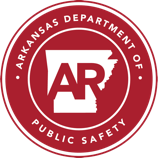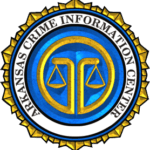NIBRS Frequently Asked Questions
Uniform Crime Reporting (UCR) National Incident Based Reporting System (NIBRS)
GENERAL QUESTIONS
Q1. What is NIBRS?
A1. NIBRS is an incident-based reporting system through which data are collected on each single crime occurrence. NIBRS data are designed to be generated as a by-product of local, state, and federal automated records systems. Thus, an agency can build a system to suit its own needs, including any collection/storage of information required for administrative and operational purposes, in addition to reporting data required by NIBRS to the national UCR Program. NIBRS collects data on each single incident and arrest within 24 offense categories made up of 52 specific crimes called Group A offenses. For each of the offenses coming to the attention of law enforcement, specified types of facts about each crime are collected. In addition to the Group A offenses, there are 7 Group B offense categories for which only arrest data are reported.
Q2. What crimes are reported in NIBRS?
A2. The following offense categories, known as Group A offenses, are those for which extensive crime data are collected in NIBRS:
- Animal Cruelty
- Arson
- Assault Offenses-Aggravated Assault, Simple Assault, Intimidation
- Bribery
- Burglary/Breaking and Entering
- Counterfeiting/Forgery
- Destruction/Damage/Vandalism of Property
- Drug/Narcotic Offenses-Drug/Narcotic Violations, Drug Equipment Violations
- Embezzlement
- Extortion/Blackmail
- Fraud Offenses-False Pretenses/Swindle/Confidence Game, Credit Card/Automatic Teller Machine Fraud, Impersonation, Welfare Fraud, Wire Fraud
- Gambling Offenses-Betting/Wagering, Operating/Promoting/Assisting Gambling, Gambling Equipment Violations, Sports Tampering
- Homicide Offenses-Murder and Nonnegligent Manslaughter, Negligent Manslaughter, Justifiable Homicide
- Human Trafficking Offenses-Commercial Sex Acts, Involuntary Servitude
- Kidnapping/Abduction
- Larceny/Theft Offenses-Pocket-picking, Purse-snatching, Shoplifting, Theft from Building, Theft from Coin-Operated Machine or Device, Theft from Motor Vehicle, Theft of Motor Vehicle Parts or Accessories, All Other Larceny
- Motor Vehicle Theft
- Pornography/Obscene Material
- Prostitution Offenses-Prostitution, Assisting or Promoting Prostitution
- Robbery
- Sex Offenses-Rape, Sodomy, Sexual Assault With An Object, Fondling
- Sex Offenses- Incest, Statutory Rape
- Stolen Property Offenses (Receiving, etc.)
- Weapon Law Violations
The following seven additional offenses categories, known as Group B offenses, are those for which only arrest data are reported.
- Curfew/Loitering/Vagrancy Violations
- Disorderly Conduct
- Driving Under the Influence
- Family Offenses, Nonviolent
- Liquor Law Violations
- Trespass of Real Property
- All Other Offenses
Q3. What are the benefits of participating in NIBRS?
A3. The ability to precisely identify when and where crime takes place, its form, and the characteristics of its victims and perpetrators is an indispensable tool in the war against crime. NIBRS provides law enforcement with that tool because it is capable of producing more detailed, accurate, and meaningful data than that produced by the traditional summary UCR Program. Armed with such information, law enforcement can better make a case to acquire the resources needed to effectively fight crime. Many individual law enforcement agencies have very sophisticated records systems capable of producing a full range of statistics on their own activities. NIBRS allows common denominator links among agencies which enables them to identify common issues so that they can work together to develop possible solutions or proactive strategies for addressing these issues. Law enforcement is a public service and requires a full accounting from an agency’s commissioner, chief, or director for the administration of that agency and the status of public safety within its jurisdiction. Full participation in NIBRS will provide statistics to enable a law enforcement agency to fulfill this responsibility. NIBRS has the capability of furnishing information on nearly every major criminal justice issue facing law enforcement today, including terrorism, white collar crime, weapons offenses, missing children where criminality is involved, drug/narcotics offenses, drug involvement in all offenses, hate crimes, spouse abuse, abuse of the elderly, child abuse, domestic violence, juvenile crime/gangs, parental kidnapping, organized crime, pornography/child pornography, driving under the influence, and alcohol-related offenses. The data will be available from all levels of law enforcement-federal, state, and local-aggregated at the level and in the manner which best meets the needs of the data user. Through NIBRS, legislators, municipal planners/administrators, academicians, penologists, sociologists, and the general public will have access to more detailed and accurate crime information than the summary system can provide.
MURDER QUESTIONS
Q1. Many times there is confusion regarding the reporting of Negligent Manslaughter versus accidental death. What is the Program’s policy in these cases?
A1. The UCR Program defines negligent manslaughter as “The killing of another person through negligence” . Established policy within the UCR Program states that if there is a question as to whether or not an incident is a negligent manslaughter, the national Program would prefer that the police department rule in favor of accidental death and not record the incident in their UCR reports.
Q2. How do you classify an incident when you have a murder and the subject commits suicide? Both the victim and the subject are on medication for depression. The investigation could not determine if the victim had asked subject to kill her. Is this a “Mercy Killing” or “Other Circumstances?”
A2. The classification is 09A Murder and nonnegligent manslaughter, one victim. The UCR Program does not collect data on suicide victims. The Handbook states that “selections of circumstances should be based on information known to law enforcement following their investigation, not decisions of a grand jury, coroner’s inquest, or other agency outside law enforcement” As the investigation did not determine that the victim had asked the subject to kill her, the agency should use “other circumstances” to best describe the situation.
Q3. What is the definition of mercy killing?
A3. Black’s Law Dictionary, sixth edition, defines mercy killing as: “Euthanasia. The affirmative act of bringing about immediate death allegedly in a painless way and generally administered by one who thinks that the dying person wishes to die because of a terminal or hopeless disease or condition” .
Q4. For Data Element 31 (Aggravated Assault/Homicide Circumstances), which codes are used for Drive-by Shootings, whether juvenile gang or nonjuvenile gang related?
A4. For Drive-by Shootings (juvenile gangs), the code is 05 = Juvenile Gang. For Drive-by Shootings (nonjuvenile gangs), the code is 09 = Other Circumstances.


